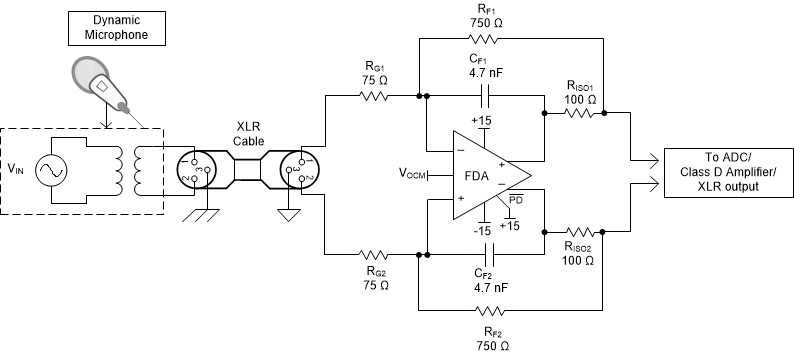SBOSA00B December 2019 – August 2020 OPA1637
PRODUCTION DATA
- 1 Features
- 2 Applications
- 3 Description
- 4 Revision History
- 5 Pin Configuration and Functions
- 6 Specifications
- 7 Parameter Measurement Information
- 8 Detailed Description
- 9 Application and Implementation
- 10Power Supply Recommendations
- 11Layout
- 12Device and Documentation Support
- 13Mechanical, Packaging, and Orderable Information
Package Options
Mechanical Data (Package|Pins)
- DGK|8
Thermal pad, mechanical data (Package|Pins)
Orderable Information
9.2.3 Differential Microphone Input to Line Level
Professional dynamic microphones typically feature low output impedance to minimize noise coupling on the microphone cable. Interfacing the microphone with high-impedance circuitry typically requires the use of an impedance conversion stage, often done with a transformer or discrete amplifiers. The flexibility of the OPA1637 allows the device to be configured with a low differential input impedance and 20 dB of gain, simplifying the impedance conversion and gain stage into a single device. Figure 9-10 shows an example of a differential, low input impedance, microphone level voltage (10 mV to 100 mV) amplifier to a line-level amplitude signal that also has adjustable dc common-mode shift capability. This design example shows how the OPA1637 makes a great choice for driving an ADC class-D amplifier.
 Figure 9-10 Fully Differential, Low-Noise, 20-dB Microphone Gain Block With DC Shift
Figure 9-10 Fully Differential, Low-Noise, 20-dB Microphone Gain Block With DC Shift